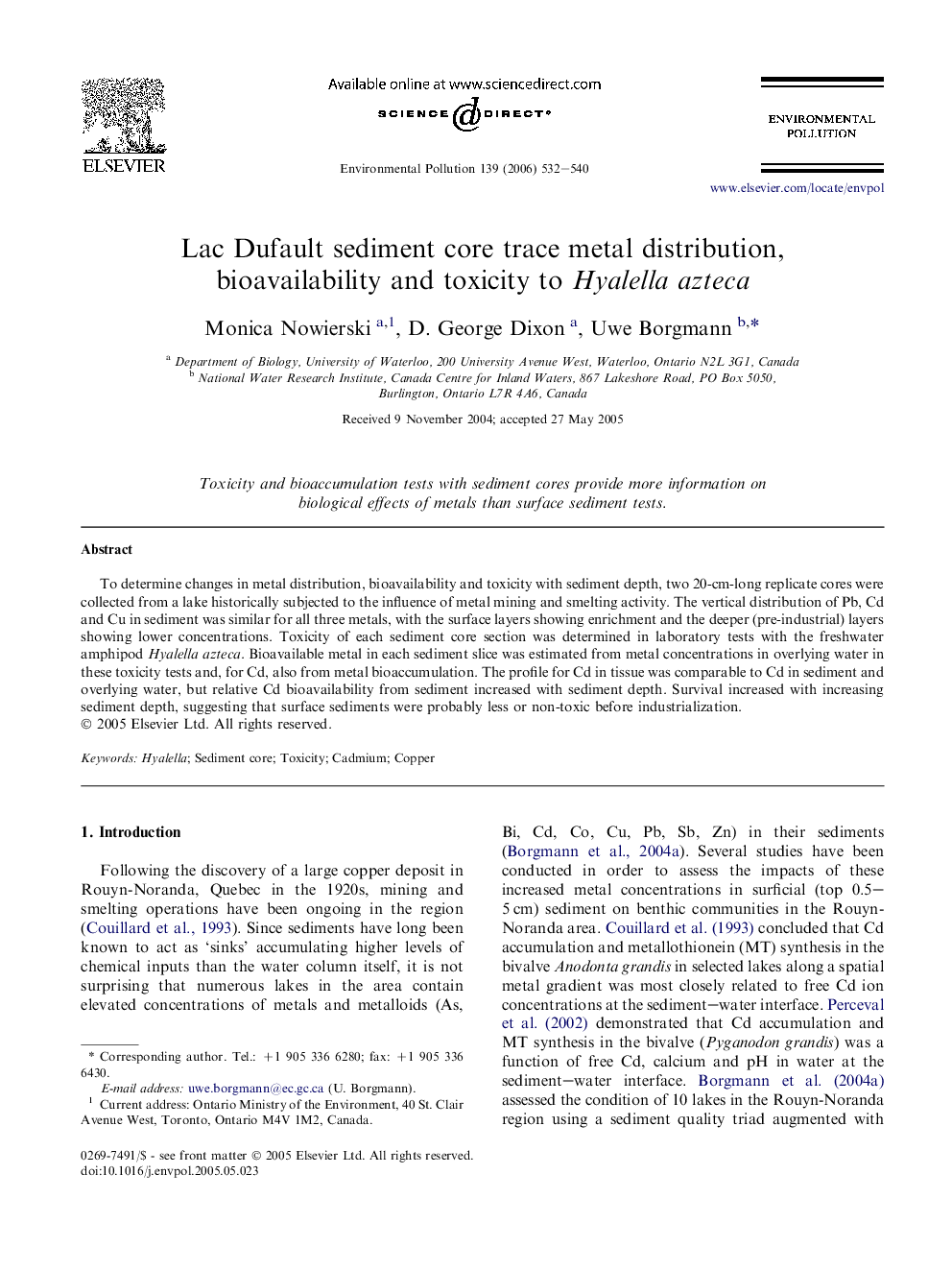| Article ID | Journal | Published Year | Pages | File Type |
|---|---|---|---|---|
| 4427816 | Environmental Pollution | 2006 | 9 Pages |
To determine changes in metal distribution, bioavailability and toxicity with sediment depth, two 20-cm-long replicate cores were collected from a lake historically subjected to the influence of metal mining and smelting activity. The vertical distribution of Pb, Cd and Cu in sediment was similar for all three metals, with the surface layers showing enrichment and the deeper (pre-industrial) layers showing lower concentrations. Toxicity of each sediment core section was determined in laboratory tests with the freshwater amphipod Hyalella azteca. Bioavailable metal in each sediment slice was estimated from metal concentrations in overlying water in these toxicity tests and, for Cd, also from metal bioaccumulation. The profile for Cd in tissue was comparable to Cd in sediment and overlying water, but relative Cd bioavailability from sediment increased with sediment depth. Survival increased with increasing sediment depth, suggesting that surface sediments were probably less or non-toxic before industrialization.
